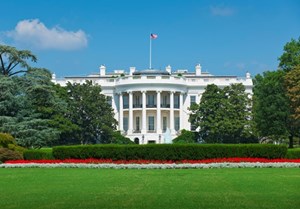Water associations unveil plan for federal low-income water assistance program
(UI) – In response to growing water affordability concerns for low-income households, five leading water associations – the American Water Works Association (AWWA), Association of Metropolitan Water Agencies (AMWA), National Association of Clean Water Agencies (NACWA), National Association of Water Companies (NAWC), and Water Environment Federation (WEF) – unveiled formal policy recommendations to Congress and the White House on establishing a permanent federal low-income water assistance program.

As part of their recommendations, the groups also released a detailed analysis, “Low-Income Water Customer Assistance Program Assessment Study,” which establishes that water affordability is a significant challenge for 20 million U.S. households and puts the annual need for federal funding to address this challenge as high as $7.9 billion.
The water groups’ lead recommendation – that establishing a permanent program by building upon the existing Low Income Household Water Assistance Program (LIHWAP) at the U.S. Department of Health & Human Services is the most viable and practical option at this time – is articulated in the Policy Memo and Recommendations.
The Associations’ recommendation is supported by 15 months of research, as well as the collective judgement of water industry experts on the ground from every corner of America. To support the concept of building on top of the LIHWAP program, the study includes an examination of existing federal low-income assistance programs, key elements that a water program should have in order to be sustainable and best practices for structuring a new, permanent program.
American Water Works Association Executive Director of Government Affairs Tracy Mehan said, “Energy has LIHEAP, food has SNAP and housing has Section 8, but there is no such program to assist struggling, low-income water and wastewater customers. It is time for the federal government to step up and implement a new low-income assistance program for the water and wastewater sectors.”
“The need for a federal low-income water assistance has been growing for years as the water affordability challenge has increased, and the COVID-19 pandemic brought the issue to a head,” said Adam Krantz, CEO of the National Association of Clean Water Agencies. “NACWA appreciates the efforts of Congress and the Administration to date, but more is needed.”
National Association of Water Companies President & CEO Robert Powelson said, “LIHWAP has benefitted thousands of customers since its creation in 2020 and this need is not going away. It is critically important for Congress to permanently fund an assistance program for water to help ensure that everyone in this country has access to safe and reliable water service.”
The LIWCAP study was conducted between November 2021 and April 2023. It outlines five different potential administrative pathways for structuring a permanent federal low-income water assistance program and the relative advantages and disadvantages of these alternatives.
The study also includes a water affordability needs assessment, including granular detail on the growing prevalence and massive scope of the low-income water affordability challenge nationwide, estimating the current number of water-burdened U.S. households could be as high as 21.3 million. It represents the first detailed analysis to preview the composition, cost, efficacy, and effectiveness of a permanent federal low-income assistance program.
Despite their policy recommendation for a permanent LIWCAP program to be housed at HHS and to build off the existing LIHWAP foundation, the water groups noted that Congress has demonstrated interest in the possibility of a low-income program at the U.S. Environmental Protection Agency (EPA).
As part of the Bipartisan Infrastructure Law, Congress authorized the establishment of a pilot low-income water assistance program at EPA and has appropriated $3 million to the Agency to assess the scale of national low-income water needs. However, because Congress has not appropriated any funds to date for program implementation, the water sector associations conclude that housing a permanent program at HHS is currently the most viable option to establish a program at this time.
LIWCAP study authors
The Low-Income Water Customer Assistance Program (LIWCAP) Assessment Study was authored by IB Environmental, One Water Econ, Raftelis, Raucher LLC, Galardi Rothstein Group, LLC, and EJ Metrics, LLC in response to federal legislative initiatives designed to help customers afford essential water and wastewater services during the economic turmoil of the pandemic. These measures constituted the first steps toward establishing a sustained federal funding program for low-income water and wastewater bill assistance, but there remained little concrete information on how to best implement a permanent program.
Related News
From Archive

- Glenfarne Alaska LNG targets late-2026 construction start for 807-mile pipeline project
- U.S. water reuse boom to fuel $47 billion in infrastructure spending through 2035
- $2.3 billion approved to construct 236-mile Texas-to-Gulf gas pipeline
- Major water pipe break in Puerto Rico hits over 165,000 customers
- Potomac River Tunnel project enters construction phase beneath Washington, D.C.
- Pennsylvania American Water launches interactive map to identify, replace lead water service lines
- Trump's tariffs drive $33 million cost increase for Cincinnati sewer project
- Utah city launches historic $70 million tunnel project using box jacking under active rail line
- Tulsa residents warned after sewer lines damaged by boring work
- Fatal trench collapse halts sewer construction in Massachusetts; two workers hospitalized



Comments